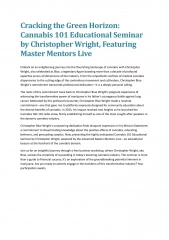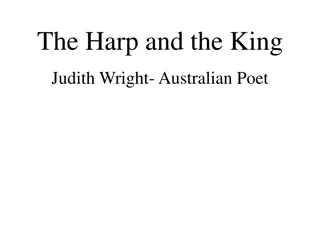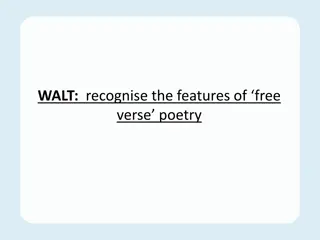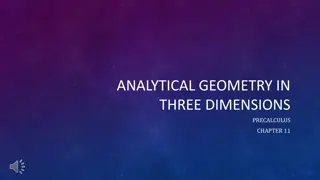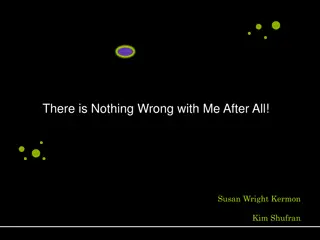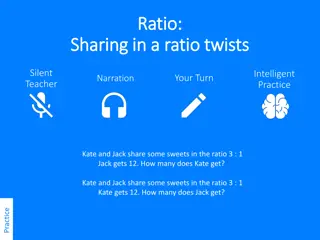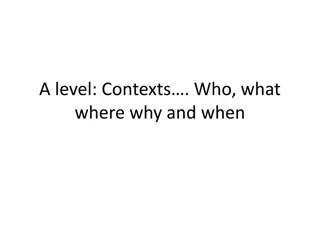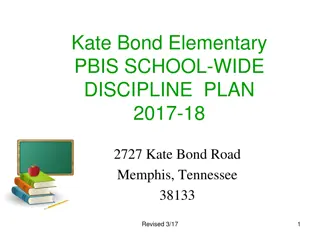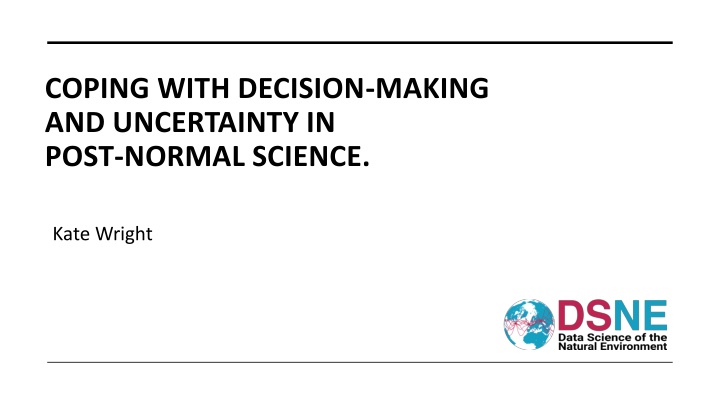
Managing Uncertainty in Post-Normal Science: A Framework for Decision-Making
Explore how Post-Normal Science (PNS) addresses uncertainty in decision-making processes, offering a framework for managing various sources of uncertainty and involving stakeholders to enhance decision clarity. Discover the importance of understanding uncertainties and their impact on decisions in the context of environmental data science.
Download Presentation

Please find below an Image/Link to download the presentation.
The content on the website is provided AS IS for your information and personal use only. It may not be sold, licensed, or shared on other websites without obtaining consent from the author. If you encounter any issues during the download, it is possible that the publisher has removed the file from their server.
You are allowed to download the files provided on this website for personal or commercial use, subject to the condition that they are used lawfully. All files are the property of their respective owners.
The content on the website is provided AS IS for your information and personal use only. It may not be sold, licensed, or shared on other websites without obtaining consent from the author.
E N D
Presentation Transcript
COPING WITH DECISION-MAKING AND UNCERTAINTY IN POST-NORMAL SCIENCE. Kate Wright
van Asselt, M.B.A., Rotmans, J. Uncertainty in Integrated Assessment Modelling. Climatic Change 54, 75 105 (2002). https://doi.org/10.1023/A: 1015783803445
POST-NORMAL SCIENCE (PNS) Developed in mid 1980s by Funtowicz and Ravetz because: Scientific problems becoming increasingly complex Facts are uncertain Decisions are urgent So need: Quality control Management of uncertainties 'Extended peer communities' References if want to follow up: Funtowicz, S.O. and Ravetz, J.R., 1990. Uncertainty and quality in science for policy (Vol. 15). Springer Science & Business Media. Funtowicz, Silvio O. and Ravetz, Jerome R, 1993, Science for the post-normal age, Futures, Volume 25, Issue 7, Pages 739- 755, https://doi.org/10.1016/0016-3287(93)90022-L. www. Nusap.net
From: https://caffeinatedthoughts.com/2014/09/calvin-beisner-post-normal-science/
SUMMARY Many different sources of uncertainty PNS provides a framework for uncertainty management Can be used to communicate the different uncertainties to decision makers from risk to ignorance Can show the importance of different uncertainties and how they can affect a decision Involvement of stakeholders - allows for clarification of what is needed to enable decisions vs the research done/to be done/ability to do Implications for Environmental Data Science increased interdisciplinarity; consideration of areas of conflict methods, language, assumptions; increased documentation.
Thank you for listening. If you have any thoughts or feedback : k.wright@lancaster.ac.uk Some other references: Beven, K. 2009. Environmental modelling : An uncertain future? : An introduction to techniques for uncertainty estimation in environmental prediction. London: Routledge. Parsons, S., 2001. Qualitative methods for reasoning under uncertainty (Vol. 13). Mit Press. Wynne, B., 1992. Uncertainty and environmental learning: reconceiving science and policy in the preventive paradigm. Global environmental change, 2(2), pp.111-127.

